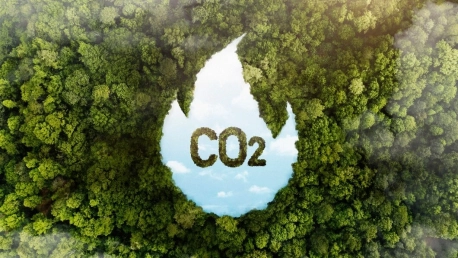Nations worldwide are tackling the challenge of fostering economic growth while simultaneously curbing carbon emissions in response to climate change. The Paris Agreement stands as a testament to the global resolve to combat global warming. Despite this, the shift towards net-zero emission policies is trailing behind what is necessary. Current trends predict that greenhouse gas emissions could rise by 9% from 2010 levels by the year 2030. This trajectory is at odds with the targeted 45% reduction needed to keep temperature increases within manageable limits. Achieving the balance between economic development and environmental stewardship is critical, but the progress required to meet the objectives of the Paris Agreement is lagging, signaling the need for more robust action to address the climate crisis.
The Energy Sector Overhaul
The Necessity for Renewable Energy Transition
With over 75% of greenhouse gas emissions originating from the energy sector, a pivot to renewable energy is critical for sustainable growth that doesn’t harm the planet. Solar and wind energy stand out as clean alternatives capable of meeting the world’s energy needs without the negative consequences of traditional fossil fuels. As we journey towards a greener economy, the onus is on investors and policymakers to embrace these technologies. The transition to renewables isn’t just an environmental imperative; it’s a linchpin for long-term economic stability and prosperity, as they provide an infinite source of energy that can drive economic development while protecting the environment for future generations. The shift to a green energy future is unavoidable and essential for countering climate change, ensuring that growth strategies are inextricably tied to sustainable practices.
Carbon Capture and Storage as an Immediate Measure
As the shift towards renewable energy progresses, the need for bridging solutions like Carbon Capture, Utilization, and Storage (CCUS) becomes increasingly vital. This is particularly true in sectors with heavy emissions footprints, such as steel and cement production, where CCUS can make a substantial impact in reducing greenhouse gases. Not merely a temporary fix, CCUS acts as a crucial conduit easing the pathway to a greener economy. Embracing CCUS is imperative for high-emission industries to cut down on their carbon output. The essential role of CCUS shouldn’t be underestimated; as a versatile tool in the climate response arsenal, it enables greater control over emissions in the crucial period before renewable solutions can take full effect. Investing in and refining CCUS technology is, therefore, an urgent priority to lower emissions effectively and support the broader transition to sustainable energy sources.
Enhancing Global Sequestration Efforts
Expanding Nature’s Absorption Capacity
Approximately 45% of human-made CO2 is naturally absorbed by the Earth, with the oceans and forests serving as key carbon sinks. Nonetheless, to handle the increasing CO2 forecasted to reach 550 parts per million by 2050, it’s vital to enhance these natural processes. Boosting the planet’s built-in carbon capture abilities through afforestation and restoring ecosystems is crucial. Such actions can significantly mitigate emissions, providing crucial leeway as we tackle climate change.Efforts to expand and safeguard natural sinks like forests and marine habitats are paramount. These strategies not only contribute to carbon sequestration but also help preserve biodiversity and maintain ecological balance. By investing in the Earth’s own mechanisms for regulating CO2, we can create a more substantial buffer against the damages wrought by fossil fuel emissions. In essence, by nurturing and reinforcing the natural world’s capacity to absorb carbon, we act in defense of our global climate.
The Role of Technological Sequestration
CCUS technology holds the key to reinforcing natural carbon sinks, aiming to capture monumental amounts of CO2 by mid-century. Its current state—emerging and expensive—presents hurdles, yet they can be overcome. Through innovation, economic incentives, and robust government support, scalable CCUS solutions are within reach. These technologies are particularly vital for industries where clean alternatives remain elusive, forming a core part of a wider carbon management framework to slash emissions.The balance between economic growth and carbon reduction is intricate but feasible. Investment in renewables and the bolstering of both natural and engineered carbon capture methods are essential for a sustainable future. Despite the enormity of the task, with a unified dedication to both creativity and action, harmonizing economic and environmental goals is attainable.









